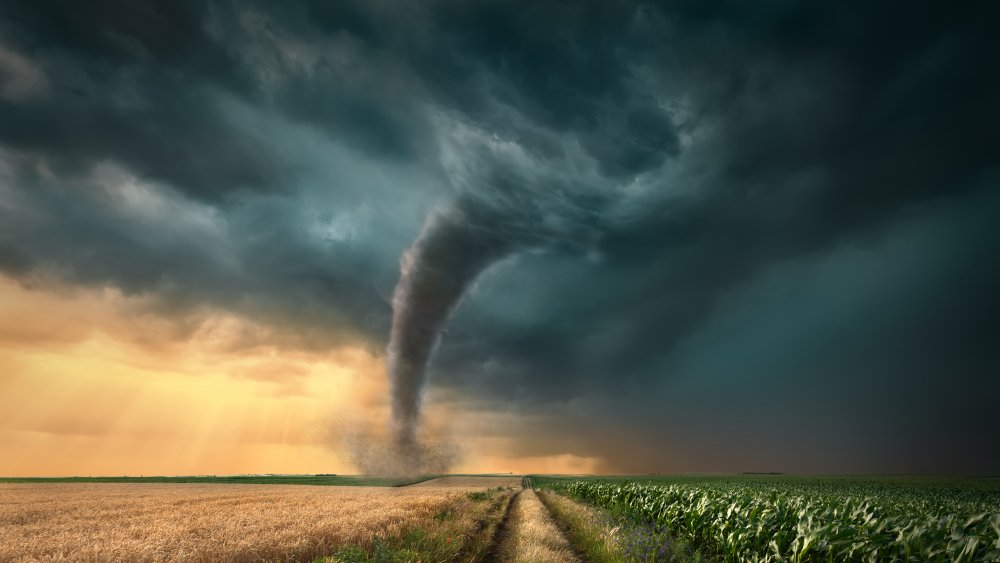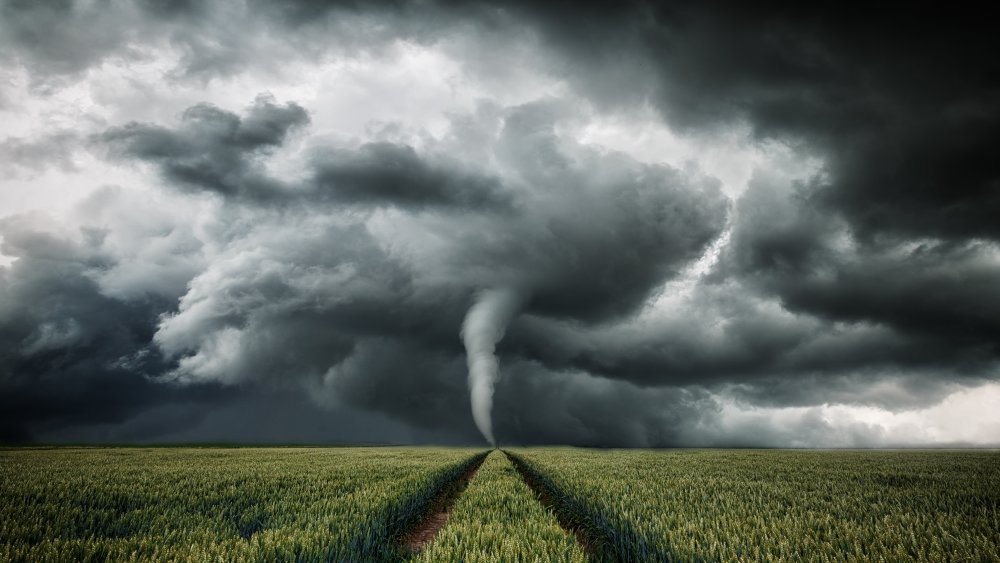Here's Why North America Has The Most Tornadoes In The World
Good ol' American pride. We've had a lot of firsts and superlatives. Whether it's individual achievement (first guy on the Moon, and no, it wasn't a hoax, really) or familial (we have more Kardashians than anywhere else. Or at least it feels that way) America has a competitive spirit, striving for #1 in whatever is getting a ranking these days. Sometimes it's an accident of geology — Old Faithful Geyser in Yellowstone, or El Capitan in California — and sometimes it's by design (which country had the first happiest place on Earth? Yes, we did). Other times it's geography and climate and a little bit of luck ... or bad luck, in the case of tornadoes, which grace this great land of ours more frequently every year than anywhere else on the planet, says The Atlantic.
First off, the United States boasts exclusive claim to Tornado Alley — roughly defined as the plains sections of the southern United States, says the National Oceanic and Atmospheric Administration (NOAA); envision a straight swath from South Dakota south to mid-Texas, typically late spring to early autumn. Second, we have the lesser-known but still-tumultuous Dixie Alley, across Mississippi, Alabama, Florida, even Tennessee, with the phenomenon showing up in late autumn and even into early winter, says NOAA. The twisters are plentiful, but what swept Dorothy off to Oz isn't unique to the United States.
The United States experiences more tornadoes every year than anywhere else in the world
Although the U.S. will suffer through upwards of 1,200 tornadoes every year (Canada is second, but only distantly, says The Atlantic, with 100) other countries also experience them, says How Stuff Works. That includes England (33 out of Europe's 300 total), Brazil and Argentina in South America, and India and Bangladesh.
Yes, climate is a factor, but so is geography. Scientific American explains that the Rocky Mountains work with the Gulf of Mexico to create the windy cones of destruction — it's the "ideal environmental conditions for the development of tornadoes more often there than any other place on earth." Tornadoes form when moist, warm air from the Gulf comes in low, and dry air from the Rockies comes in high. The two meet and do a sort of windy tango and begin to create turbulent currents — "the right combination of the vertical temperature and moisture profile most likely to produce tornadoes."
Not all tornadoes are deadly. How Stuff Works relates that 75 percent of reported twisters are considered "weak," 22 percent are "strong," and the remaining 3 percent are the ones that will make you hold on tight to Toto while you watch Miss Gulch pedal through the air. Just try to take that away from us.

